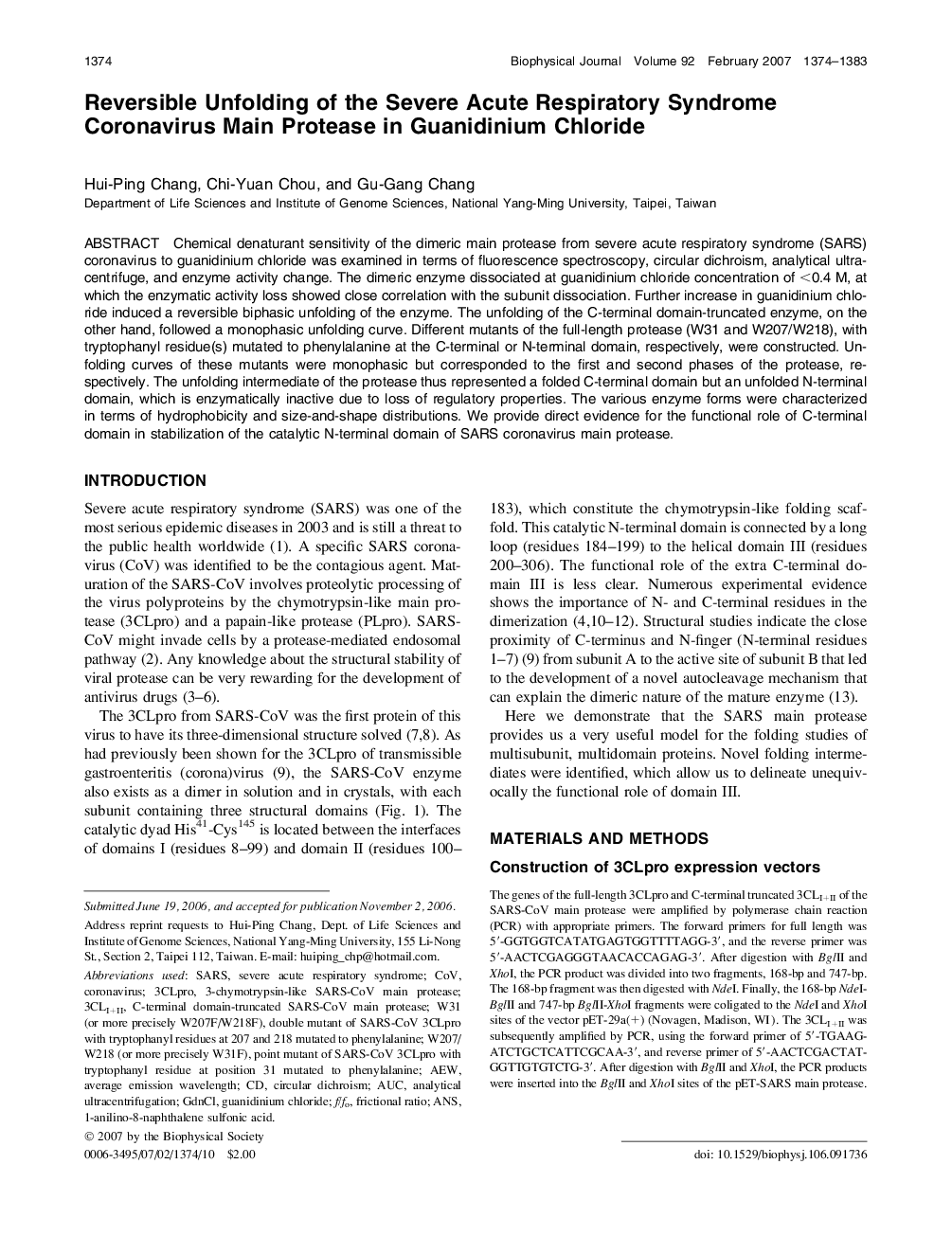| Article ID | Journal | Published Year | Pages | File Type |
|---|---|---|---|---|
| 1959414 | Biophysical Journal | 2007 | 10 Pages |
Chemical denaturant sensitivity of the dimeric main protease from severe acute respiratory syndrome (SARS) coronavirus to guanidinium chloride was examined in terms of fluorescence spectroscopy, circular dichroism, analytical ultracentrifuge, and enzyme activity change. The dimeric enzyme dissociated at guanidinium chloride concentration of <0.4 M, at which the enzymatic activity loss showed close correlation with the subunit dissociation. Further increase in guanidinium chloride induced a reversible biphasic unfolding of the enzyme. The unfolding of the C-terminal domain-truncated enzyme, on the other hand, followed a monophasic unfolding curve. Different mutants of the full-length protease (W31 and W207/W218), with tryptophanyl residue(s) mutated to phenylalanine at the C-terminal or N-terminal domain, respectively, were constructed. Unfolding curves of these mutants were monophasic but corresponded to the first and second phases of the protease, respectively. The unfolding intermediate of the protease thus represented a folded C-terminal domain but an unfolded N-terminal domain, which is enzymatically inactive due to loss of regulatory properties. The various enzyme forms were characterized in terms of hydrophobicity and size-and-shape distributions. We provide direct evidence for the functional role of C-terminal domain in stabilization of the catalytic N-terminal domain of SARS coronavirus main protease.
